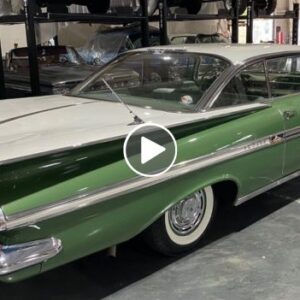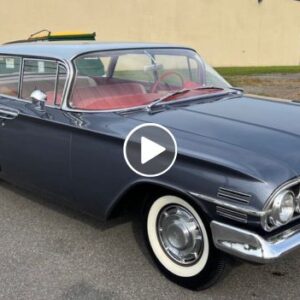The Bugatti Type 46 Super Sport, produced by the famed French automaker Bugatti from 1930 to 1933, stands as a testament to the brand’s commitment to excellence in both design and engineering. This magnificent automobile, known for its blend of power, luxury, and craftsmanship, occupies a special place in automotive history. In this article, we delve into the fascinating story of the Bugatti Type 46 Super Sport, exploring its design, performance, historical context, and enduring legacy.
A Pinnacle of Elegance and Craftsmanship
The Bugatti Type 46 Super Sport was born in an era of remarkable innovation and design in the automotive world. Ettore Bugatti, the founder of the marque, had already established himself as a visionary in the industry with his creations like the iconic Bugatti Type 35. With the Type 46 Super Sport, Bugatti aimed to combine the exhilaration of high-speed driving with the opulence of a luxury car.
The Type 46 Super Sport exuded elegance from every angle. Its sweeping fenders, long hood, and gracefully sloping roofline were testaments to the Art Deco design sensibilities of the era. The prominent Bugatti grille, adorned with the brand’s signature “EB” badge, added a touch of grandeur. The car sat atop wire-spoke wheels, often finished with polished aluminum or chrome accents, which further enhanced its visual appeal.
-1692763101.jpg)
The interior of the Type 46 Super Sport was a work of art. Crafted with the finest materials available, the cabin featured rich leather upholstery, burled wood trim, and meticulous attention to detail. The dashboard, adorned with exquisite gauges and controls, exemplified Bugatti’s commitment to both form and function. Passengers reveled in the comfort of plush seating and appreciated the convenience of innovative features for the time, such as adjustable suspension settings.
Under the Hood: Engineering Excellence
-1692763119.jpg)
While the Bugatti Type 46 Super Sport certainly impressed with its aesthetics, it was under the hood where it truly shone. Bugatti’s engineers had endowed the car with a powerful and sophisticated drivetrain that reflected the brand’s racing pedigree.
At the heart of the Type 46 Super Sport was a remarkable 5.4-liter straight-eight engine. This advanced powerplant featured dual overhead camshafts, a rarity for the time, and was constructed with meticulous precision. It produced an impressive 140 to 160 horsepower, allowing the car to reach a top speed of around 100 miles per hour (160 kilometers per hour). This level of performance was a testament to Bugatti’s engineering prowess and dedication to power and reliability.
The Type 46 Super Sport rode on a chassis that was designed for both strength and agility. It featured a ladder-type frame constructed from high-quality steel, ensuring rigidity and durability. The suspension was equally impressive, with a combination of semi-elliptical leaf springs and hydraulic dampers providing a comfortable and controlled ride.
Historical Context: The Interwar Period
To truly appreciate the Bugatti Type 46 Super Sport, one must consider the historical context in which it emerged. The years from 1930 to 1933 were marked by a unique blend of optimism, luxury, and innovation, yet they were also marred by economic challenges and the looming specter of World War II.
The early 1930s witnessed the world grappling with the Great Depression, a global economic crisis that left millions unemployed and economies in shambles. In such a challenging economic climate, the production of luxury automobiles like the Type 46 Super Sport was a bold move. However, Bugatti’s commitment to craftsmanship and engineering excellence helped maintain the brand’s reputation and appeal, even in these trying times.
The Bugatti Type 46 Super Sport flourished during the Art Deco era, a period defined by elegance and opulence in design. This influence is evident in the car’s sleek lines, ornate detailing, and meticulous craftsmanship. The Super Sport, with its blend of performance and luxury, perfectly embodied the spirit of the time.
Production and Rarity
Despite its exceptional qualities, the Bugatti Type 46 Super Sport was not a mass-produced automobile. Bugatti’s commitment to quality over quantity meant that only a limited number of these magnificent cars were ever made. Estimates suggest that between 400 and 470 Type 46 chassis were produced in total, with only a fraction of those being Super Sport variants.
The exclusivity of the Type 46 Super Sport contributed to its mystique and desirability among collectors and enthusiasts. Owning one became a mark of distinction, reserved for those who appreciated the artistry of automotive design and the thrill of driving a finely tuned machine.
Enduring Legacy
The Bugatti Type 46 Super Sport’s legacy extends far beyond its production years. It remains an icon of automotive history, revered for its combination of power, luxury, and craftsmanship.
Today, the Bugatti Type 46 Super Sport is a highly sought-after collector’s item. Rare and beautifully preserved examples command astronomical prices at auctions. Its scarcity and historical significance make it a must-have for discerning collectors who seek not only a superb automobile but also a piece of art.
The Super Sport also played a pivotal role in shaping the future of Bugatti as a marque. The lessons learned from the Type 46 Super Sport influenced subsequent Bugatti models, including the legendary Bugatti Type 57, which carried forward the brand’s commitment to performance and luxury.
Furthermore, the Bugatti Type 46 Super Sport’s fusion of power and opulence continues to inspire modern luxury car manufacturers. Its timeless design and uncompromising commitment to craftsmanship serve as a touchstone for those seeking to create automobiles that transcend mere transportation to become rolling works of art.
Conclusion
The Bugatti Type 46 Super Sport, produced from 1930 to 1933, remains an enduring symbol of automotive excellence. This magnificent automobile, with its Art Deco elegance, powerful engine, and meticulous craftsmanship, captured the spirit of an era marked by both luxury and economic challenges. Today, it stands as a coveted collector’s item, a testament to Bugatti’s commitment to blending power and opulence, and an enduring source of inspiration for the world of luxury cars. In its timeless design and exquisite engineering, the Bugatti Type 46 Super Sport remains a masterpiece that continues to enchant automotive enthusiasts and collectors alike.





